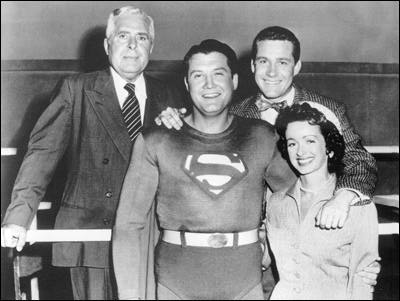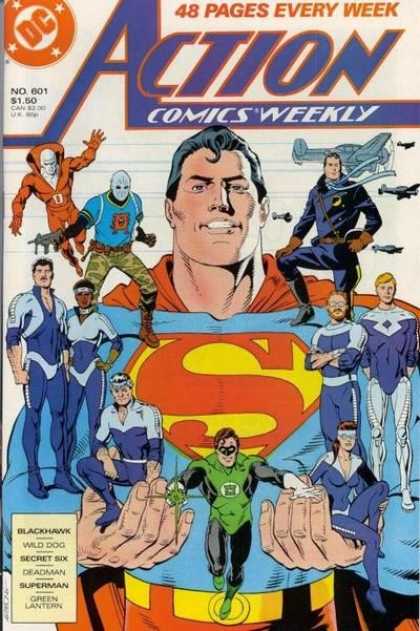After 10 years, the world says goodbye to Smallville, the reimagining of Superman’s early years before he became the Man of Steel.
Created by Alfred Gough and Miles Miller, the show started out as a teen drama (which the CW, formerly the WB was most known for) with superpowers. The primary focus was the budding romance between Clark Kent (Tom Welling) and Lana Lang (Kristin Kreuk), with the occasional freak of the week, an ordinary Smallville citizen transformed by Kryptonite left over from the meteor shower that ushered Clark to Earth, thrown in. Gough and Miller had one domineering stance: no tights, no flights. They felt that any Superman action would herald the end of the show. So, they gave Clark the fear of heights to keep him grounded, and it would be 10 years later that the suit would even make it onto the show (more on that later). Although, it should be noted there have been several times when Clark has flown, but usually under evil influence. And his cousin Kara (Laura Vandervoort) flew in all her subsequent appearances.
The formula obviously worked, and the show chugged along. Eventually, the freak of the week storylines were dropped in favor of introducing new interpretations of DC villains and characters, and focusing on Lex Luthor’s slow ascent to evil (until Michael Rosenbaum left the show after the 7th season). But, gradually, the show became stagnant in its direction. The storylines took a constant one step forward, three steps back approach between episodes. There was always the constant push to keep Clark as Clark, and thus any development towards Superman was always rendered meaningless.
Gough and Miller departed the show after season 7, and Todd Slavkin, Darren Swimmer, Kelly Souders and Brian Peterson took the reigns (however the two former would depart for Melrose Place after one season). With that change came a tonal shift for the show. Greater emphasis was placed on Clark’s progression into Superman. Characters such as Doomsday, Zatanna, the Justice Society of America, the Legion of Superheroes and more began making their debut. Checkmate was introduced as an antagonist, and eventually Chloe Sullivan (Alison Mack) would take them over. Although, not to completely change things, there was still the romantic back and forth between Clark and Lois Lane (Erica Durance).
And that brings us to the final episode. There are spoilers ahead, so if you haven’t seen the episode yet, you may want to come back to this when you have.
Although there were some satisfying moments, overall the episode was extremely disappointing. For starters, too much time was devoted to Clark trying to convince Lois to marry him, her having decided the episode before after having his powers for a day she would be a hindrance to his heroics. The payoff to Oliver Queen being possessed by the darkness was minimal, culminating in his being convinced to switch out Clark’s ring with a gold Kryptonite one (which would turn Clark human forever). But, a little pep talk after and Oliver breaks free of the hold. Oliver gets his payback later by easily taking out Darkseid’s minions; a feat which was never explained since Orion’s bow, the only true weapon against the darkness, was destroyed by Granny Goodness (Christine Willes) last episode.
The second-most heralded event was the return of Lex Luthor to the show, and not just the body double or child-aged clone that have been on since Rosenbaum’s departure. Unfortunately, his use was minimal (due to Rosenbaum’s availability) beyond his return and a brief conversation with Clark where he promises to make his life hell. That is, until he’s mind-wiped by the end of the episode. Souders and Peterson have claimed in interviews that if Rosenbaum’s return was guaranteed sooner they would have peppered more hints to his return throughout the season. However, I thought there was sufficient build-up for that over the last three years, with all the clones and secret projects, and eventually the rapidly-aging character of Alexander.
The overreaching Darkseid story was far less developed. The subplot seemed to only exist within half the episodes of the season, culminating seemingly out of nowhere into the final confrontation of the episode. That confrontation, though, was culminated in Darkseid possessing the resurrected Lionel Luthor (John Glover). That fight was extremely brief, dominated mostly by a 5 minute flashback sequence of Clark’s rescues from the entire series, before Clark finally gained the ability to fly and destroyed Lionel’s body effortlessly. The true Darkseid does make an equally-brief appearance before that, though, in some of the worst CGI to grace the series.
Now, finally, we come to the big enchilada: the suit. The producers procured the Superman Returns suit (why they needed to acquire the suit, especially that of all of them, instead of having one made I still don’t know) to use in the finale. It made its appearance in the Fortress of Solitude until it was finally given to Clark by the “ghost” of Jonathan Kent (John Schneider). But, fans are ultimately cheated out of the moment they were waiting for as Clark is never shown in the suit beyond far CGI-shots and his head with a CGI cape waving in the background. Even his ultimate saving of the planet isn’t shown beyond a, wait for it, red/blue blur and then suddenly all is well. The only time we see Superman at all is within a Smallville comic Chloe reads to her son in the bordering future sequences of the episode. And the only time we see Clark in at least the shirt is at the end when he does the classic shirt-rip.
And that basically sums up the finale. Forced drama (the wedding), wasted characters (did we really need Jonathan as present as he was?), non-fights, and not even the big payoff everyone has been waiting for. Not to mention the absolutely cheapest CGI in the series. While it’s understandable on a TV budget it’s hard to do a big epic, the fact is there have been times when Smallville had reached epic lengths in both action and effects, negating that kind of excuse. And then there are the Smallville-shippers who defend the moves by saying it’s a show about Clark Kent, and NOT Superman. Again, when the goal is to get TO Superman, when that moment arrives it should be brought front and center.
But, ultimately, whatever the reasons they did what they did, it’s hard not to get a bit of a chill when John Williams’ theme is used correctly, and that much they at least got right.
So, how to fix this travesty?
-Cut down the wedding drama SIGNIFICANTLY.
-Get the Justice League involved. By far the best episode of the series was when they first teamed-up, and they haven’t since (either Clark has one-on-one or there have been body doubles, like for Hawkman’s funeral).
-Make the threats actual threats. You spend so much time building up your bad guys only to have them punked out in two second fights?
-Un-convolute Lex’s return. You had Alexander already aging rapidly. Just have him become Lex, forget the whole Darkseid/Lionel/Tess angle.
-Mind-wipes are never a good idea. You completely destroy years of character development just to remove an inconvenient truth? Too easy.
-If your endgame is Superman, SHOW SUPERMAN! And above all, don’t acknowledge the travesty that was Returns. If you absolutely had to get a pre-made suit, at least get the Dean Cain one from Lois & Clark.

























